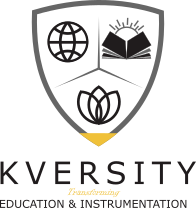
Featured
Kversity Tutorials Under construction ...
Curriculum K-11 Physics
Surrey, British Columbia, Canada
Building Student Success - B.C. Curriculum (gov.bc.ca)

Physics is a natural science that deals with matter and energy and their interactions123. It is the study of energy and matter in space and time and how they are related to each other.
Objectives
Student's Learning:
The objectives for standard K-11 Physics include
* To learn definition of Physics
* To learn Laws of Physics with their applications
* Work sheets for practice for every lesson
* Animated video of the important concepts
* Self Testing: Quiz at the end of every lesson
* For Teachers: The lesson plans include learning about all these concepts in depth from the examination point of view.
Teacher's support:
For effective teaching, the teachers support includes scientific lesson plans, crisp notes, worksheets, charts, video clips
Parent support:
Progress tracking and guidance to the parents for better development of their children.
Assessment Strategies
Assessment strategies include a quiz at the end of every chapter and a combined general quiz etc..
Extras
Relevant Video clips, MCQ, Important Questions, Worksheets, Olympiads, Quizzes and competitions, etc.
Contact
Looking for individual or institutional packages of tutorials/courses, please contact here ...
Contents
* Addition and subtraction
* Right-angle triangle trigonometry
Start learning
1D and 2D, including
* Vertical launch
* Horizontal launch
* Angled launch
Start learning
* For example, normal force, spring force, tension force, frictional force and
* The factors that affect magnitude and direction
Start learning
* First: the concept of mass as a measure of inertia
* Second: net force from one or more forces
* Third: actions/reactions happen at the same time in pairs
Start learning
* one-body and multi-body systems
* inclined planes
* angled forces
* elevators
Start learning
* Conservation of energy
* Principle of work and energy
Start learning
* mechanical and electrical (e.g., light bulbs, simple machines, motors, steam engines, kettle)
* numerical examples (e.g., resistance, power, and efficiency in circuits)
Start learning
lever, ramp, wedge, pulley, screw, wheel and axle
and mechanical advantage
Start learning
* Electric circuits (DC), Ohm’s law, and Kirchhoff’s laws
* Including terminal voltage versus electromotive force (EMF)
(e.g., safety, power distribution, fuses/breakers, switches, overload, short circuits, alternators)
Start learning
*As an application of the law of conservation of energy (e.g., calorimeter)
Start learning
* transverse versus longitudinal
* linear versus circular
Start learning
* Properties: differences between the properties of a wave and the properties of the medium, periodic versus pulse
* behaviours: reflection (open and fixed end), refraction, transmission, diffraction, interference, Doppler shift, standing waves, interference patterns, the law of superposition of waves
Start learning
* For example, pitch, volume, speed, Doppler effect, sonic boom
Start learning
For example, harmonic, fundamental/natural, beat frequency
Start learning
* plotting of linear relationships given a physical model (e.g., uniform motion, resistance)
* calculation of the slope of a line of best fit, including significant figures and appropriate units
* interpolation and extrapolation data from a constructed graph (e.g., position, instantaneous velocity)
* calculations and interpretations of area under the curve on a constructed graph (e.g., displacement, work)
Start learning
MCQ quiz 30 questions, each question carrying 2 marks; Max Time 60mins.
Click to start
Lessons
L1 Vector and scalar quantities
L2 Horizontal, uniform and accelerated motion
L5 Mass, force of gravity, and apparent weight
L6 Newton's laws of motion & free-body diagrams
L7 Balanced & unbalanced forces in systems
L8 Conservation of energy
L11 Applications of simple machines by first peoples
L12 Electric circuits (DC), Ohm's Law & Kirchhoff's Law
L13 Thermal equilibrium & specific heat capacity
L14 Generation & propagation of waves
L15 Properties & behavior of waves
L16 Characteristics of sound
L17 Resonance & frequency
L18 Graphical methods in Physics






No Comments